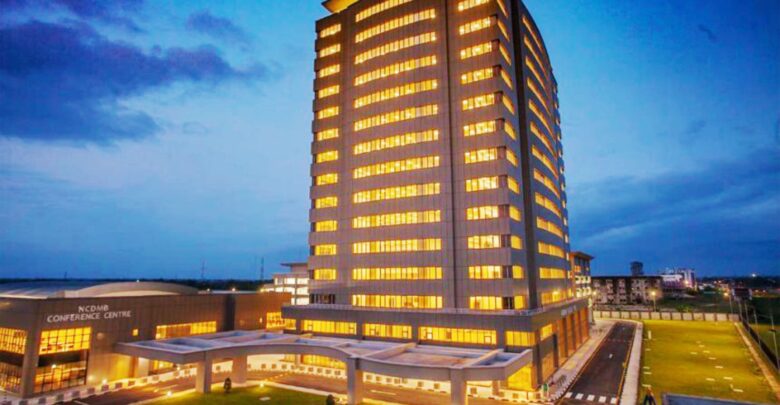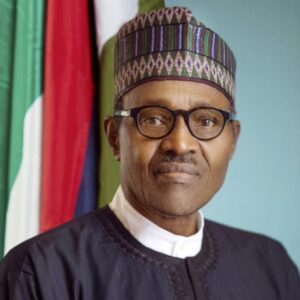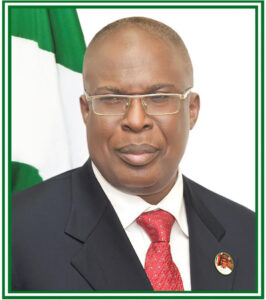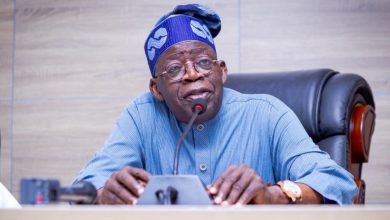Nigerian Content Tower: A Testimonial Indictment Of The NDDC

Among other things, last Friday’s launch of the 17-storey Nigerian Content Tower (NCT) in Yenogoa, Bayelsa State, by President Muhammadu Buhari, clearly underscored what and how much could be achieved by the government or its agencies when there was focus, accountability, genuine commitment and patriotism in the execution of any projects of collective national interest.


At the commissioning of the Tower on August 13, 2020, which was administered virtually from the Council Chambers of the Presidential Villa, President Buhari, with a touch of hyperbole, emphasized on his determination to turn the Niger Delta into a Dubai. The President who said it was gladdening to see a project of that magnitude begun and completed within reasonable time, added that the commissioning was a clear manifestation of the Local Content Act of 2010, which aims at fully empowering and integrating the local factor into development of the country.
“With the commissioning of this project, I want to highlight that we have put in place a landmark of reference in the Niger Delta to reflect long-lasting legacies that signpost the years of oil and gas exploitation, and I assure you that there is more to come. I am also pleased that this project has been delivered by local contractors supported by other local engineering and project consultants. We must all be proud that we finished what we started”, the President stated.
Initiated by the 4th National Assembly and signed into law by former President Goodluck Jonathan in March 2010, the Nigerian Local Content Act, inter alia, was aimed at building the capacity of indigenous firms and providing more opportunities for participation in businesses in the country. Local content is defined in relation to operational terms covering ownership, location, employment and management of enterprises involved in the primary production or associated value-added processes involved in such production.
Related: Local Content Law: AKHA Receives Report Of Core Oil Communities
Perhaps the most distinguishing and commendable fact about the NCT is that it was wholly conceived, designed and constructed by indigenous contractors from foundation to finish, a feat which may not have been possible had the Nigerian Content Act and practical compliance by government not inspired it.
Land for the building was allocated by the Bayelsan Government during the administration of Timipre Silva, who incidentally is now the minister of state for petroleum resources, who also performed the literal commissioning in Bayelsa, on behalf of the President. The main contractor for the project was Megastar Technical and Construction Company Limited; while a Nigerian architect, Popham Walter Odusote and other sub-contractors and consultants designed and supervised the project execution.
According to the executive secretary of Nigerian Content Development Monitoring Board (NCDMB), the Federal Government board statutorily responsible for local content development, which also spearheaded and supervised the NCT, Engr. Simbi Wabote, work at the site began late 2015.
As commissioned approximately five years by this time, the 70 metres tall complex consists of all modern conveniences, with full compliments of a-1000 seat conference centre and a 10,000MW power plant jointly constructed by Nigerian Agip Oil Company (NOAC), which will ensure uninterrupted electricity supply to both the Tower and the Nigerian Oil and Gas Park, also being developed by the NCDMB at Emeyal, Bayelsa State.
Further details supplied by Engr. Wabote show that the ground floor area of the main building is 30,000m2, equivalent to four football fields, and able to accommodate more than 1,000 workplaces for specific use and for the use of other occupants of the building. Other components include a fire-retardant façade, Intelligence Management System that cuts down power usage by 25 per cent, provision of over-hanging cradle on the roof slab to clean the four sides of the building, zero voice transmission through the walls of the conference centre, scissors design in the ramp of the multi-level car park to avoid head-on collision, and others.
In strict adherence to the local content policy, SimbiWabote further disclosed: “The materials used are 76 per cent Nigerian content, with the tiles, electrical cables, granite and many other building materials produced in Nigeria. The manpower used for services and labour are over 95 per cent Nigerian content”. He noted that the skills transferred to the local workforce in the construction of a high rise building have been unprecedented and “about half of the surface of the building was buried below to keep it standing and provide structural foundation support, using 207 piles, each at 800 millimetre diameter, driven to 30 metres depth”.
Bayelsa State governor, Douye Diri, in a goodwill address praised the consistency and accountability that drove the project: “Such carefully thought-through and integrated project crafting marks an important milestone in the way to go in developing a country we can all be proud of”, he stated. Again, the MD of Megastar, Architect Harcourt Adukeh, in his observation attributed the success story of the project to what he called “clarity of intent” that was not circumscribed by the four consecutive executive secretaries of the board in the last 10 years.
However, remark made during the event by the group managing director (GMD) of the Nigerian National Petroleum Corporation (NNPC), Mr. Mele Kyari,perhaps most profoundly encapsulated the burden of this essay.The NNPC boss concisely described the commissioning of the building as “a testimony to the fact that with the right mindset, anything can be delivered in the country”.
Some dignitaries in attendance were former President Goodluck Jonathan; Senate president, Ahmed Lawan; deputy Senate president, OvieOmo-Agege; three ministers including thatof transportation, Rotimi Amaechi. All present were other legislators, managing directors of international oil and gas companies and heads of government agencies.
The commissioning of the gigantic 17-storey Nigerian Content Tower stands as a sharp contrast to the endless conversations over the ongoing construction of what was supposed to serve as permanent headquarters building for the Niger Delta Development Commission (NDDC). It would be a great risk to state with any certainty when this project which was conceived in 1994 in the days of the Oil Mineral Producing Areas Development Commission (OMPADEC) will be commissioned in the logical usage of the word.
Moreover, counting from September 10, 2008, when late former President Umaru Musa Yar’adua established the Ministry of Niger Delta, there have been three ministers – excluding the incumbent Akpabio – namely, late Ufot Ekaette, Mr. Peter Godsday Orubebe and Pastor UsaniUsani. Each of the previous three, like the present, all inherited the uncompleted NDDC Headquarters.
Emphatically, from 1994 when OMPADEC then headed by the incumbent Nigerian President, Mr. Muhammadu Buhari, initiated the project, it is approximately 26 years by today, yet the possibility and date for the true completion of the NDDC headquarters along the Eastern By-pass in Port Harcourt is still a matter of lame conjectures. Painfully, Chief Godswill Akpabio in one of his interactions with the press had hinted that the commission has been paying upwards of N300million annually as rent for its present temporary head office along Aba Road, Port Harcourt.
Of course, the original completion date of March 31, 2020 put forward by the acting director of projects in the NDDC, Dr. Cairo Ojougbor, was subsequently shifted to April 30, 2020. What was his argument? The importation of materials and mobility of labour towards completion of the project are adversely affected by the current global epidemic, Covid-19. There certainly must be lessons to learn from the commissioning of the Nigerian Content Tower within five years!




